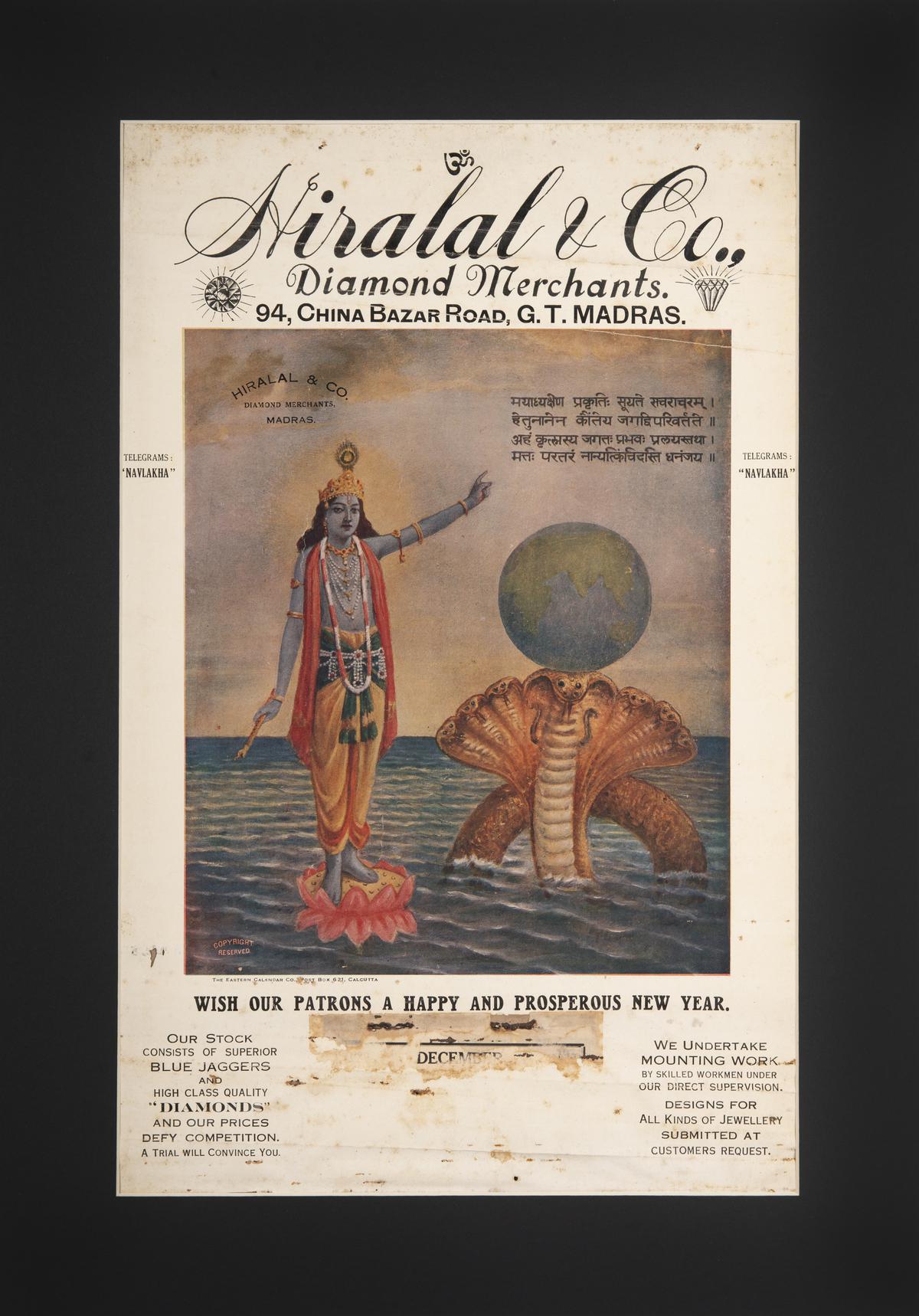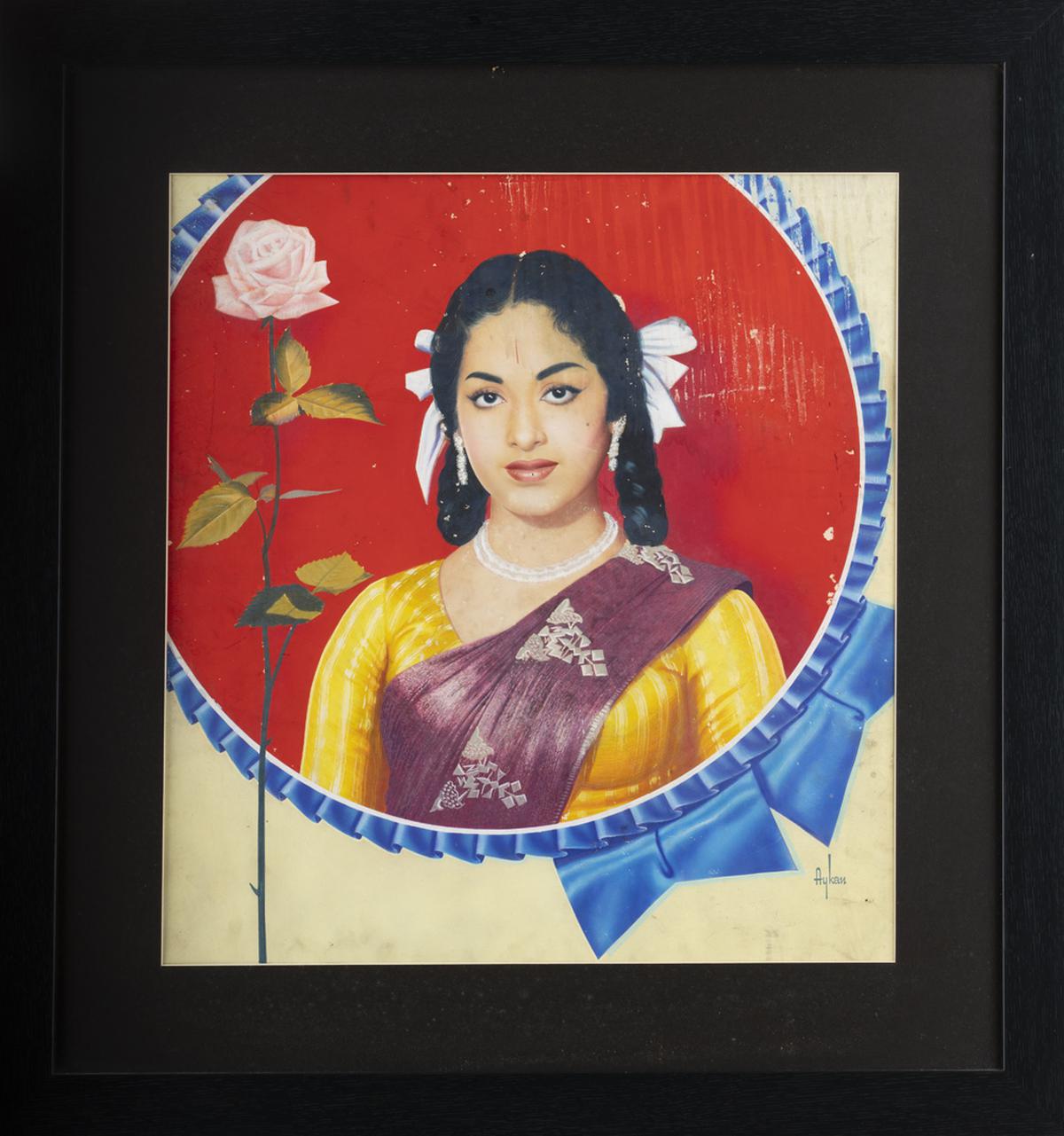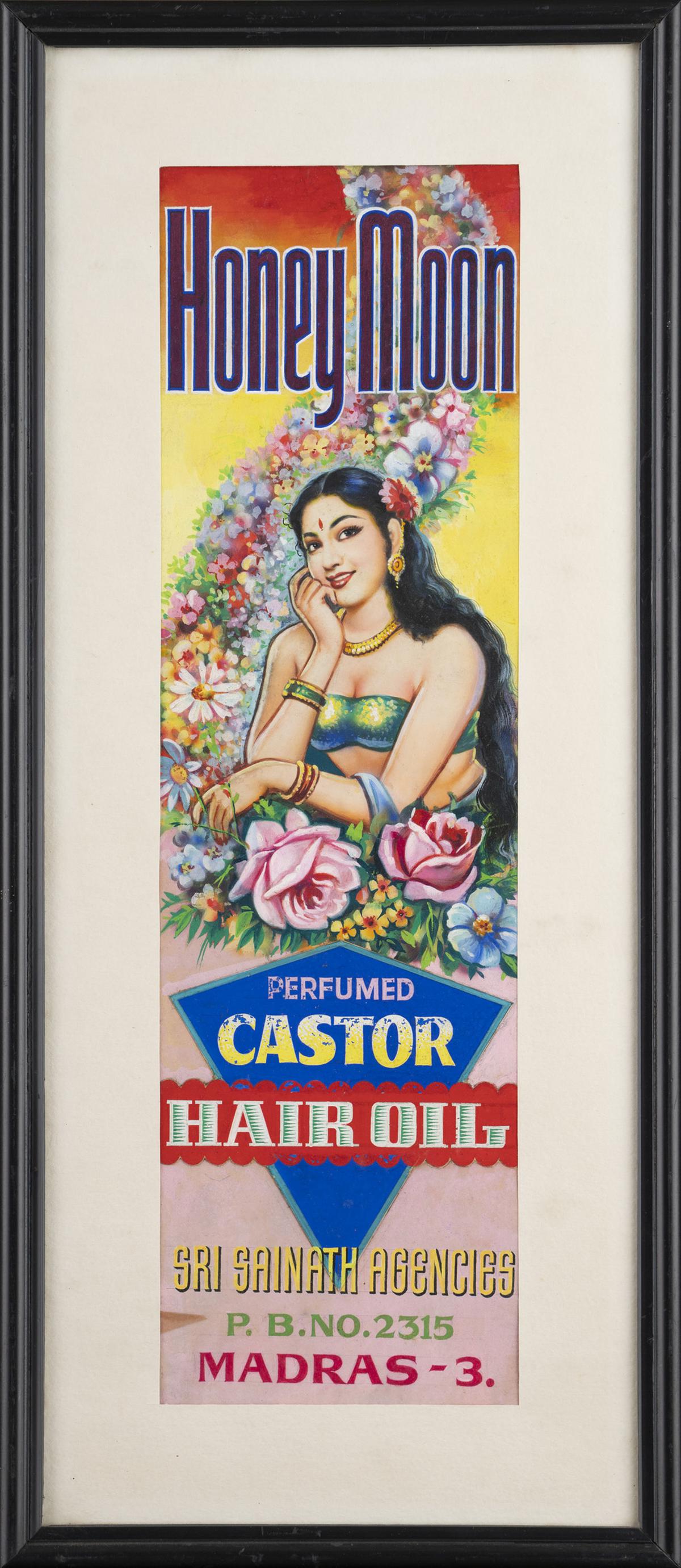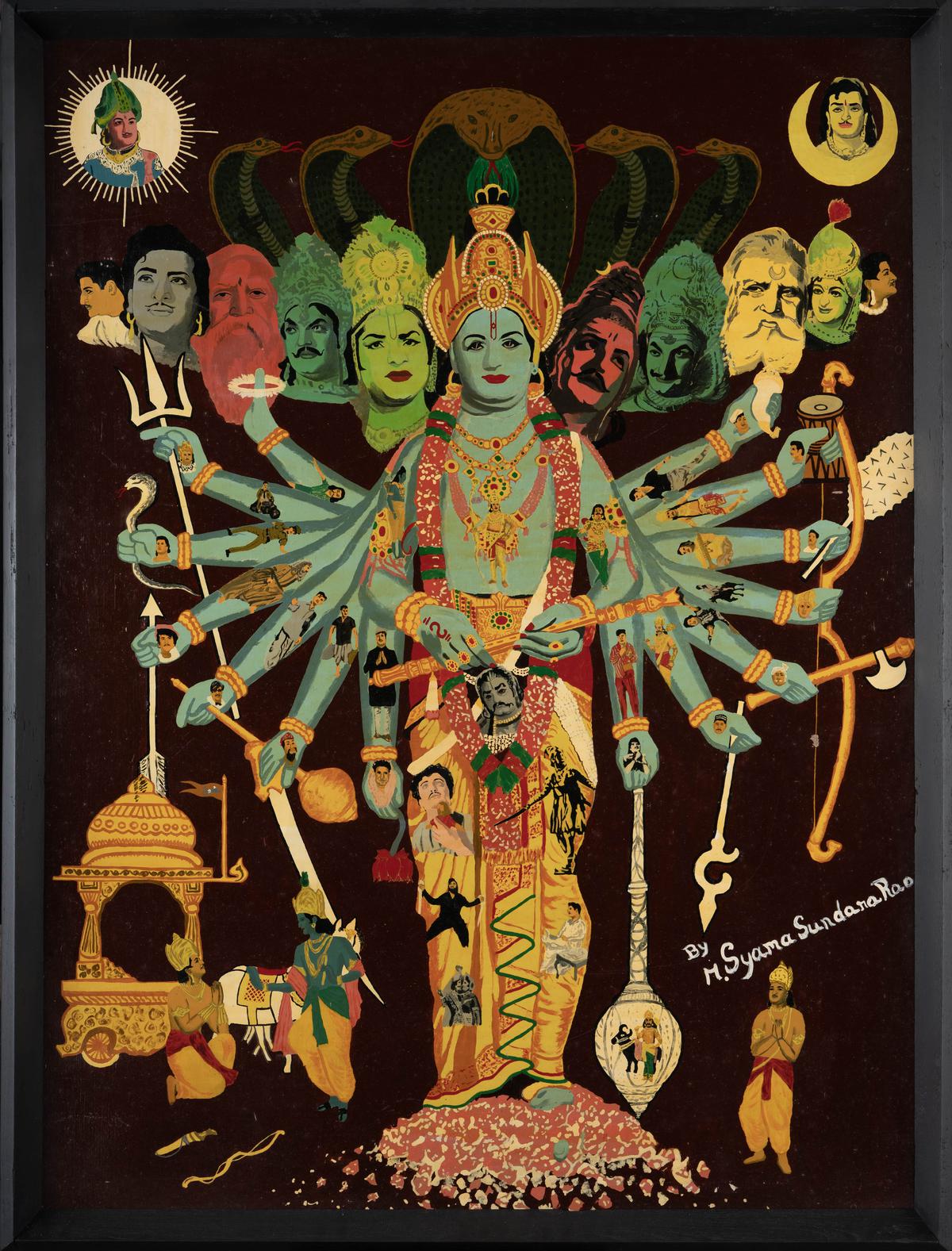A Tanjore painting from 1889
| Photo Credit: special arrangement
Gods and goddesses have been part of South Indian homes in the most unusual forms since the late 19th Century. It’s not rare to find a stray calendar, an invitation card or even advertisement pamphlets featuring the ideal depictions of gods tucked into a wallet or in the puja room of your grandparents’ house. Today, on Ashvita’s brick-laden walls is an attempt to trace the pivotal points that marks commercial art’s journey in the State, from Tanjore paintings often commissioned by the royal court to more contemporary versions of commercial art featuring cinema’s known faces. Spiritual and Vernacular Expressions from the South, currently on display at Ashvita’s Gallery, is thus a survey exhibition spread across centuries of work.
A Tanjore painting with a wooden frame worn by time and dotted with specks of gold that speaks to the grandeur of this school of art, is the starting point of this visual narrative.

One of the early calendars with religious art
| Photo Credit:
special arrangement
“It starts from Thanjavur with the palagai padams as they were called in Tamil Nadu, and moves to reverse glass paintings, and later to chromolithographs,” says Nafeesa Khaderkutty, curator. She points to a hand painted lithograph from 1889 that depicts Rama’s pattabhishekam (coronation). Originally a black-and-white lithograph that was later filled in with colours, this frame is one of the highlights from the entire collection. Such scenes also speak to the South Indian psyche.
The reverse glass paintings show a more economical face of these commercial canvases with a religious bend, when compared to a Tanjore painting. Chromolithographs are what popularised commercial art to the extent to which we see remnants of the industry even today. The Raju community from Andhra Pradesh, of which the pioneer C Kondiah Raju and his students were part of, has been largely credited with South India’s interaction with commercial art.

This work by Aykan shows cinema’s influence on commercial art
| Photo Credit:
special arrangement
Though Raja Ravi Varma was admittedly more popular, it is not wrong to call them contemporaries. “Kondiah Raju set up photo studios and started painting the backgrounds for these studios. With the advent of the matchbox and firecracker industry in Sivakasi, he started to understand the market, and the demand for print material. That’s how these artists from the South forayed into religious art,” says Nafeesa. Most of the god figures in their paintings are modelled after their own kin, which in turn makes them relatable. An original Ravi Varma is a seamless addition to this wall of lithographs.
With offset printing, wider possibilities came to the fore: “Late 1980s to 1990s is when offsets started coming to the southern part of India. They could now print on cardboard, plastic, and the scope of colours had also expanded with the CMYK scheme,” adds Nafeesa. Done by an artist from Thiruvarur, as the signage suggests, a print shows the banks of the Cauvery and the sculpture of a goddess, possibly Kaveri amman. In some cases, such specifics help locate the print.

A yesteryear advertisement featuring commercial art
| Photo Credit:
special arrangement
Slowly these religious figures started seeping into the business world with advertisements. One of the oldest prints on display from the 1980s, is a calendar by Hiralal & Co., a diamond merchant then in China Bazar, Madras. The wall dedicated to religious figures in commercial print throws up some interesting observations: “The gallery had all these prints which pushed us to research further. All these prints are testament to how religious art influenced even marketing,” says Nafeesa.
In its final piece, commercial art’s more contemporary manifestations (1940s to ‘70s) take over the wall. Here, one cannot miss cinema’s indelible mark on the industry as contemporary artists like Aykan, Maniam, Ramaa, R Natarjan and the like, created work that gave a visual identity to magazine covers, comic panels and adverts of the time. A particular canvas by M Syamasundara Rao has actor NTR resembling the 10-headed demi-god Ravana, each face a different character, distinct with emotion.

M Syamasundara Rao’s contemporary work
| Photo Credit:
special arrangement
Spiritual and Vernacular Expressions from the South is on display till February 20 at Ashvita’s Gallery, Dr Radhakrishnan Salai.